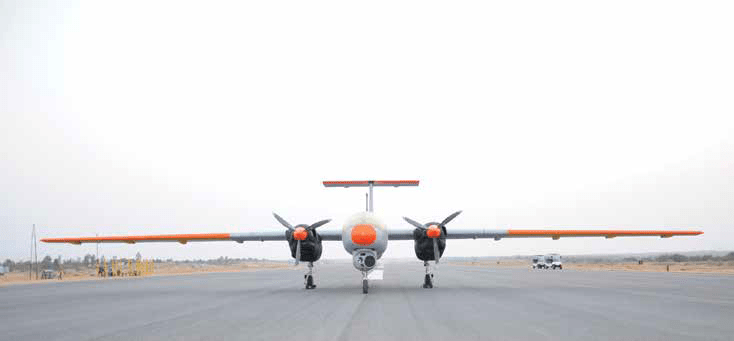SOURCE: IDRW.ORG TEAM

The fate of DRDO’s Tapas Medium-Altitude Long-Endurance (MALE) Unmanned Aerial Vehicle (UAV) program has taken an interesting turn. While funding for its production has been diverted to the newer Archer-NG program, the Tapas story is far from over. DRDO’s Aeronautical Development Establishment (ADE) will continue to refine the airframe, utilizing its potential for both engine testing and future platform development.
Tapas, originally known as Rustom-II, has been a significant player in India’s UAV journey. It has achieved several milestones, including successful flights at 28,000 ft and 18 hours endurance, demonstrating its capability for surveillance and intelligence gathering missions. While not without its challenges, Tapas has paved the way for advancements in indigenous UAV design and technology.
Even though the chances of Tapas entering production are slim, its role in supporting future UAV programs is significant. The refined airframe, tested engine, and integrated sensors will all contribute to the development of more advanced and capable platforms.
While the operational future of Tapas might be limited, its contributions to research, development, and technology testing will undoubtedly shape the trajectory of India’s UAV programs in the years to come. Tapas may not be the ultimate solution, but its legacy will live on, propelling India’s ambitions towards a future of self-reliant and cutting-edge UAV technology.
The decision to prioritize Archer-NG, with its potentially superior performance and next-generation features, is a strategic one. However, it doesn’t signify the abandonment of Tapas. The program will continue to serve valuable purposes:
- Airframe Refinement: ADE will further optimize the Tapas airframe for better drag reduction, contributing to improved fuel efficiency and flight performance. This knowledge can be directly applied to future UAV designs.
- Engine Testing Platform: Tapas will be used as a testbed for the newly developed 180Hp engine, another crucial step in India’s quest for self-reliance in UAV propulsion systems.
- Sensor Development Platform: The Tapas platform will be used to test and integrate next-generation sensors for the proposed High-Altitude Long-Endurance (HALE) UAV program, another ambitious project in the pipeline.
NOTE : Article cannot be reproduced without written permission of idrw.org in any form even for YouTube Videos to avoid Copy right strikes. Websites doing illegal reproductions will get DCMA and Legal Notices.